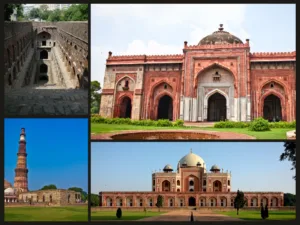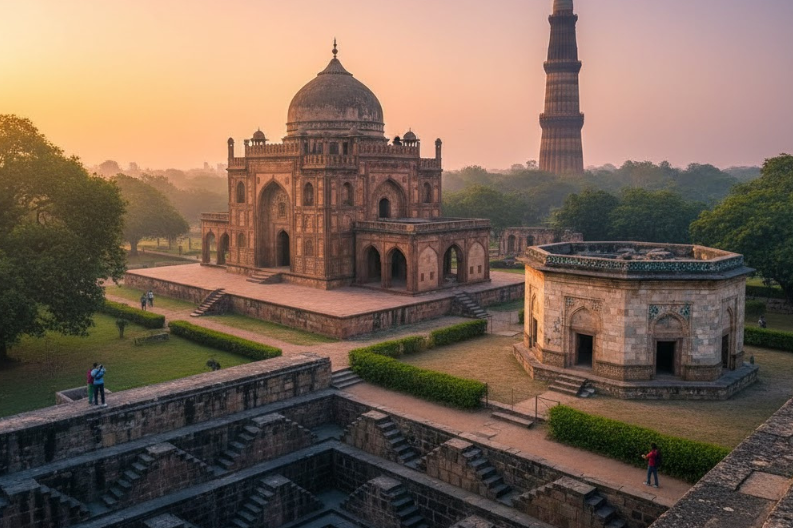Delhi, the capital of India, is a city that breathes history at every turn. Its streets are lined with ancient monuments, majestic forts, and exquisite tombs, each narrating a fascinating tale of the past. Delhi’s historical places not only provide a glimpse into India’s rich heritage but also offer a journey through time, showcasing the architectural marvels and cultural diversity that have shaped this vibrant metropolis.
In this article, we will delve into some of the most remarkable historical places in Delhi. Each of them is proof of the city’s storied past.
1. Qutub Minar
Our journey begins with the iconic Qutub Minar, a UNESCO World Heritage Site located in the southern part of Delhi. It is a towering marvel of Islamic Architecture.

It was built in the early 13th century by Qutb-ud-din Aibak, the founder of the Delhi Sultanate. This towering minaret stands at a staggering height of 73 meters (240 feet). It is not only an architectural marvel but also a testament to the power and grandeur of the Islamic rulers of that era.
The Qutub Minar complex also includes several other historical gems, such as the Quwwat-ul-Islam Mosque. The intricate calligraphy and detailed carvings on the pillars and walls of this mosque provide a glimpse into the artistic achievements of the time.
2. Red Fort
Moving on to the heart of Old Delhi, we encounter another UNESCO World Heritage Site: the Red Fort. This magnificent fort is a symbol of India’s struggle for Independence. It was built in the 17th century by the Mughal Emperor Shah Jahan. Its red sandstone walls, which give the fort its name, enclose a sprawling complex of palaces, halls, and gardens.
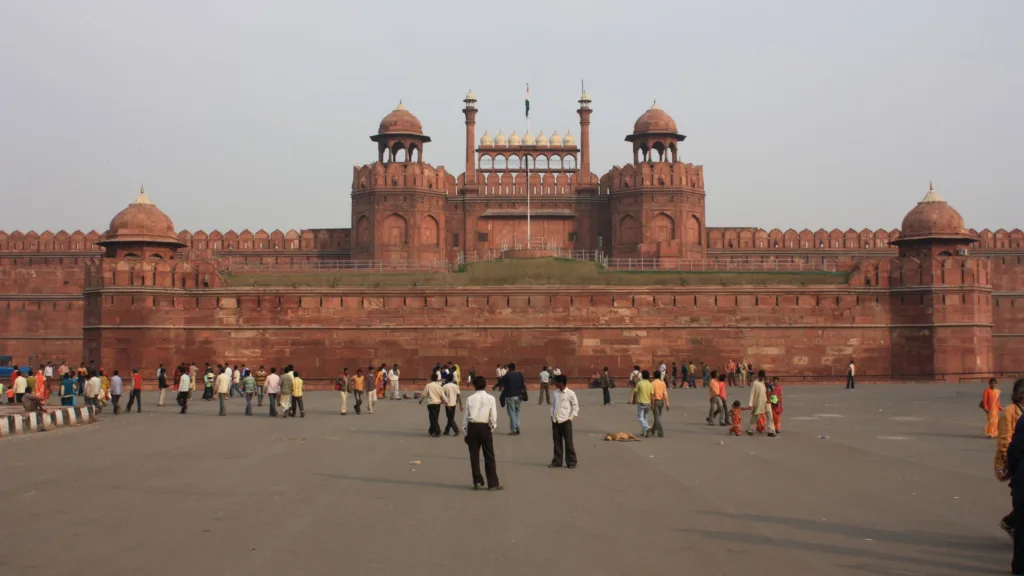
The Red Fort holds immense historical significance as it was the site where India’s first Prime Minister, Jawaharlal Nehru, hoisted the Indian national flag on August 15, 1947, marking India’s independence from British colonial rule.
Every year, on Independence Day, the Prime Minister of India continues this tradition, making the Red Fort a symbol of India’s sovereignty and freedom.
3. Humayun’s Tomb
A short distance away from the Red Fort lies Humayun’s Tomb, another architectural gem and UNESCO World Heritage Site from the Mughal era. Built in the mid-16th century, it is the tomb of Emperor Humayun, designed in a style that would later influence the construction of the Taj Mahal in Agra.

The complex surrounding the tomb features lush gardens, water channels, and other Mughal architectural elements. The symmetrical layout and intricate details of Humayun’s Tomb make it a prime example of Mughal architecture, characterized by its use of red sandstone and white marble.
4. Jama Masjid
Not far from the Red Fort stands the Jama Masjid, India’s largest mosque. Commissioned by Emperor Shah Jahan, the mosque was completed in 1656 and can accommodate up to 25,000 worshippers.
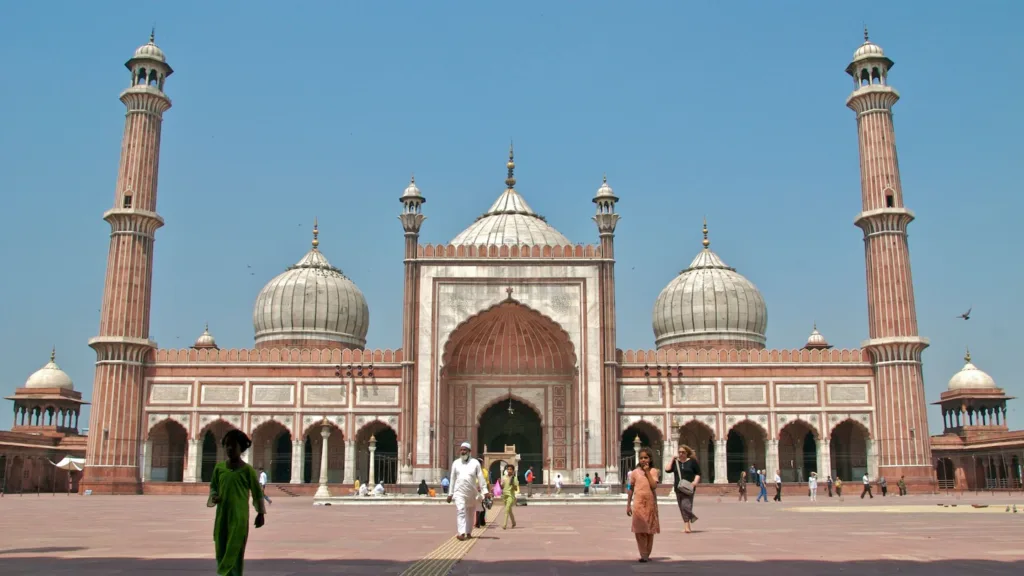
Its stunning red sandstone and white marble construction, coupled with its three massive domes, make it a visual marvel. Visitors can climb one of the mosque’s minarets for a panoramic view of Old Delhi. It also offers a unique perspective on the bustling streets below. The Jama Masjid remains an active place of worship and a testament to the enduring influence of Mughal architecture in India.
5. India Gate
A departure from the Mughal architecture, the India Gate is a war memorial dedicated to the soldiers who laid down their lives during World War I. This gate is a tribute to their sacrifice.
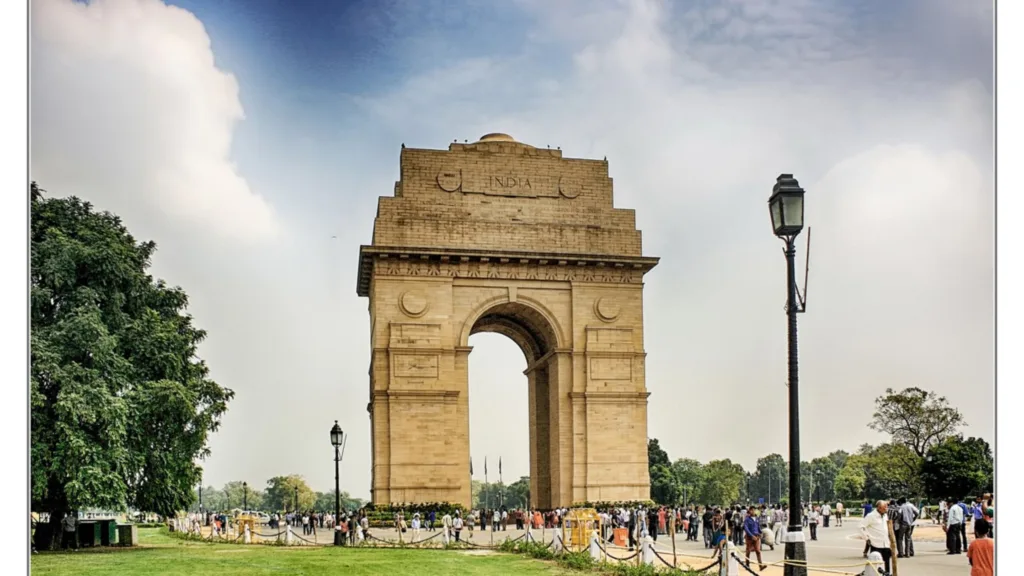
It was designed by Sir Edwin Lutyens, who was one of the architects behind New Delhi’s design. The India Gate is an imposing structure that stands 42 meters (138 feet) tall. At the base of the gate lies the Amar Jawan Jyoti, an eternal flame that symbolizes the immortal spirit of the Indian soldiers. The India Gate serves as a poignant reminder of the sacrifices made by countless Indian soldiers in various wars and conflicts.
6. Lotus Temple
While Delhi is replete with historical monuments, it also embraces modern architectural marvels. The Lotus Temple, also known as the Bahá’í House of Worship, is one such example. Shaped like a lotus flower, this stunning temple is open to people of all faiths and serves as a place of meditation and reflection.

Designed by Iranian-Canadian architect Fariborz Sahba, the Lotus Temple has won numerous awards for its innovative and eco-friendly design. The gleaming white marble structure is surrounded by lush green gardens and serene pools, offering a peaceful respite from the bustling city.
7. Raj Ghat
Raj Ghat is a simple yet powerful memorial dedicated to Mahatma Gandhi, the father of the Indian nation. It is located on the banks of the Yamuna River. This black marble platform marks the spot where Gandhi was cremated after his assassination in 1948.

Raj Ghat is a place of quiet contemplation and homage to the man who led India to independence through non-violence and civil disobedience. It is surrounded by beautifully maintained gardens. The memorial is particularly poignant during Gandhi Jayanti, his birth anniversary when people from all over the country come to pay their respects.
8. Tughlaqabad Fort
As we venture farther south, we encounter the imposing ruins of Tughlaqabad Fort, built by the founder of the Tughlaq dynasty, Ghiyas-ud-din Tughlaq, in the 14th century.
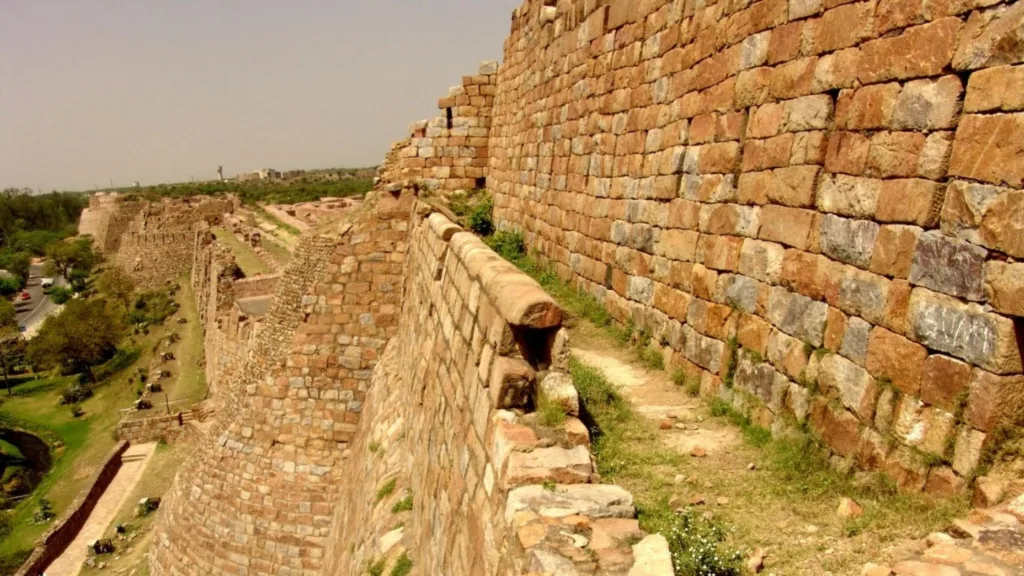
This fort stands as a testament to the ambitious architectural projects undertaken during the Tughlaq dynasty’s rule. The fort’s massive walls, bastions, and underground passages give a sense of the grandeur that once characterized this citadel.
Despite its historical significance, Tughlaqabad Fort is often overlooked by tourists, making it an ideal spot for those seeking a quieter historical experience in Delhi.
9. Purana Qila
Purana Qila is believed to be one of the oldest forts in Delhi, with historical traces dating back to the Mahabharata era. It is also known as or the Old Fort. The current fort, however, was constructed by Sher Shah Suri, a 16th-century Afghan ruler who briefly interrupted the Mughal rule.
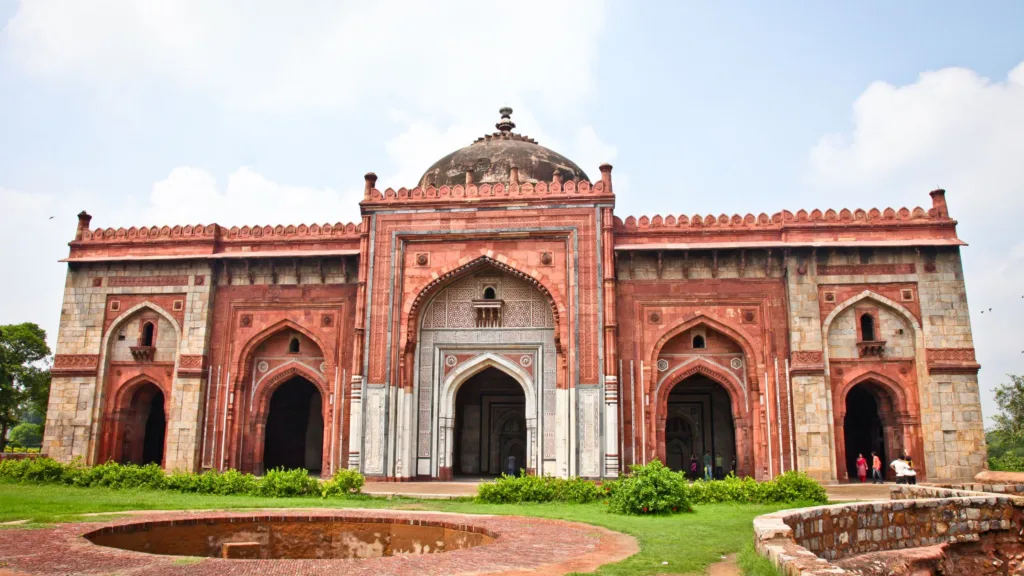
The fort is a blend of various architectural styles and materials, including red sandstone and gray quartzite.
It houses several structures, including the Qila-i-Kuhna Mosque, which is a fine example of Indo-Islamic architecture. The fort’s location beside the Yamuna River adds to its charm and historical significance.
10. Agrasen ki Baoli
Agrasen ki Baoli is a stepwell that dates back to the 14th century. It is hidden amidst the bustling streets of Connaught Place. This architectural marvel served as a source of water and a place for social gatherings in ancient times.
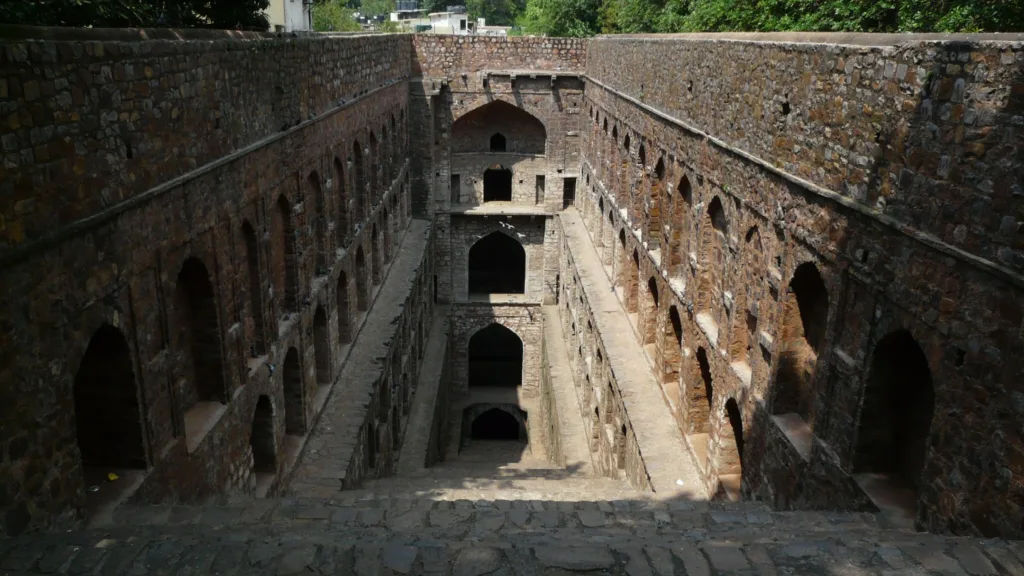
The baoli features a unique architectural design, with a series of arched niches and steps leading down to the water level. The best part about this place is that it often remains less crowded compared to other attractions in Delhi. There is also a belief that this Baoli is one of the haunted places in Delhi. This place offers visitors a serene and contemplative experience.
Ending Note
Delhi’s historical places are not just relics of the past; they are living chronicles of India’s rich cultural heritage. Each stone, each carving, and each inscription tell a story of India’s evolution, from ancient civilizations to the modern nation it is today.
Visitors from all over the world wander through the corridors of these historical marvels. They are not merely spectators but participants in a journey through time, experiencing the grandeur, artistry, and spirituality that define India.
The historical richness invites the world to delve into its past, witness the fusion of cultures, and appreciate the artistry of bygone eras. In doing so, it fosters a sense of belonging, reminding humanity of the common threads that weave us all together.
As Delhi continues to evolve, these historical places stand as sentinels, reminding us of the importance of preserving our roots, cherishing our diversity, and celebrating the magnificence of our shared human legacy.
Frequently Asked Questions (FAQs)
- Can I visit all these historical places in a single day?
While it’s theoretically possible, it’s advisable to dedicate at least two to three days to fully immerse yourself in the historical splendors of Delhi.
- Are there guided tours available for these historical sites?
Yes, most of these sites offer guided tours conducted by knowledgeable experts who provide in-depth insights into the historical and architectural significance of each place.
- Are photography and videography allowed inside these monuments?
Photography is generally allowed in most historical sites, but it’s always best to check with the respective monument authorities for specific rules and regulations.
- Are there any entry fees for these historical places in Delhi?
Yes, there are entry fees for most historical sites in Delhi. The fees vary for Indian and international tourists.
- Are these historical sites accessible to differently-abled individuals?
Many historical sites in Delhi have taken steps to improve accessibility, including ramps and designated pathways. However, it’s advisable to check the specific site’s accessibility features before planning your visit.

